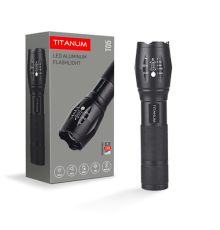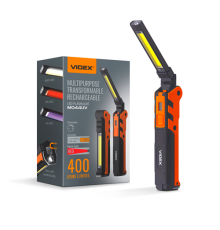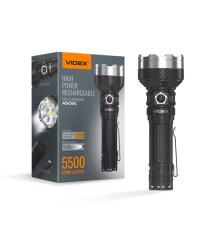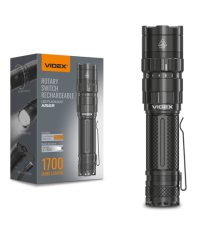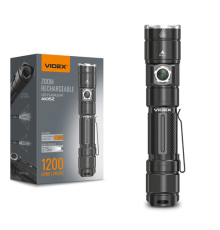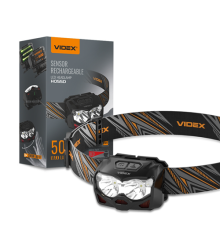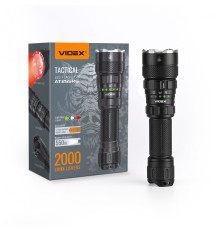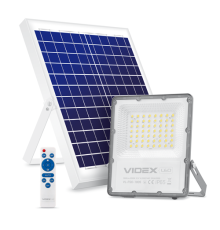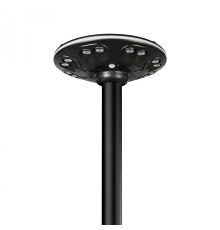Flashlights can be classified according to different criteria. Let's highlight the most important ones:
Class
- Amateur flashlight – used in everyday life. In terms of light power and protection from adverse effects, it is inferior to professional models, but wins in price.
- Professional flashlight – designed for special tasks, characterized by high light power, moisture, dust, shock protection, a large number of operating modes. It is used by security guards, rescuers, divers, military, sailors and other professionals. A professional model costs much more than an amateur one.
View
- Flashlight– characterized by small size and weight, often has a cylindrical shape. The most popular type of lamps.
- Keychain Flashlight – the most compact and cheapest model that will always be at hand (keychain). It has too little light output, which is enough only for simple tasks, such as illuminating a keyhole. The keychain flashlight is designed for one mode of operation, has no focusing and light filters.
- Lantern (manual lamp) – universal lamp for giving, forays into nature, at home (in case of a power outage). It has balanced characteristics of reliability and power.
- Lantern-lamp – used for all-round lighting of camping, tent, construction site and the like. Some models are made in the form of a cylinder. Other features of the lamp-lamp: diffused light, wide beam, hanging and carrying handle. Power source – battery.
- Spotlight – powerful stationary device with large dimensions and weight, which can be carried. A distinctive feature – wide and long-range light beam. Such a flashlight often has special devices for adjusting the lighting, for example, swivel heads. In addition to bulkiness, the disadvantages of the lamp include a high price. Equipped with a battery.
- Lamp set – consists of several lamps. For example, there are kits that include a headlamp and a hand lamp.
Mount
- Manual– has an oblong shape. Suitable for summer cottages, camping trips, use in urban environments. Runs on batteries or accumulator. It occurs most often and is represented by two types:
- Universal– optimal balance between functionality and small size, sufficient for daily household needs;
- Tourist– compares favorably with the previous version with a greater power of the luminous flux and wide functionality. Cons: high price, significant weight. Many touring models are battery powered.
- Forehead – unlike the manual counterpart, it is put on the head with an elastic band or a strap. As a result, the hands are freed, and the light beam is always directed towards the person's gaze. It has a limited luminous flux and is comparable in capabilities to a universal flashlight. But there are also quite powerful models. Power source – batteries or compact battery. Headlamps are used by miners, firefighters, speleologists, stalkers, climbers, rescuers, hunters, fishermen. Also useful for cyclists.
- Underbarrel – attached to the weapon, but can be used separately. This is a durable and powerful flashlight that is used by representatives of law enforcement agencies and hunters.
- On clothes (portable) – Equipped with a pocket clip for hanging from clothing, freeing up your hands. In such a flashlight, the light beam is directed perpendicular to the body.
- Outdoor– installed on the floor. Has a large size and weight. Spotlights and lamp-lamps belong to this type.
- Hanging – hung with a hook on a nail, an awning brace, a tree branch, under the dome of a tourist tent. A typical example of a pendant lamp – lantern-lamp.
- To the bike handlebar – used to illuminate the path in front of the bike at night. The lamp also makes the cyclist more visible to car drivers and other road users. A characteristic feature – shock and vibration resistance.
Destination
- Tactical– used by the military, hunters, representatives of power and security structures. It has a durable case, protected from shock and moisture. Other characteristic features: high power, capacious battery. Tactical models are expensive. A tactical flashlight can be mounted on a weapon to use it as a target indicator and blind prey. This lamp transfers recoil from shots.
- For self-defense – features a long, heavy and durable body that can play the role of a baton. Some models combine a lamp and a stun gun (shock flashlights). Such models are painfully shocked even through thick down jackets. Their discharge sound is able to disperse a pack of stray dogs, which, as we are told on the evening news, attack people from time to time.
- Inspection – used when carrying out repairs in the garage or car repair shop. Creates a bright beam, sufficient to illuminate hard-to-reach areas of the car. Resistant to dust, shock and moisture.
- Construction – illuminates the workplace on the construction site. It is characterized by high power and a case with good dust and moisture protection. These models include spotlights and spotlights.
- Camping – designed to illuminate a tent, garage or house (in case of a power outage). Some models are equipped with a solar battery. Often a camping lamp is made in the form of a lamp-lamp. Thanks to this, the devices are not so convenient to carry in your hands, but they are easily placed on the soil, grass. They can be hung on a tree or any hook.
- For diving (underwater light) – It is used for work under water when examining the sea or river bottom. Differs in bright colors (facilitates search of the fallen lamp under water), high power of a light stream and waterproof case. Disadvantages: limited scope, high price. Recommended for divers, connoisseurs of photography and video shooting, spearfishers. The diving lantern has a cooling system for working underwater. For this reason, it is undesirable to turn on the lamp outside the water at maximum power – it can overheat.
- Expeditionary - combines several properties at once: search and camping, and is also characterized by shock-resistant housings and a large supply of energy. Often they have a built-in or external solar panel and a power bank function.
- Search - designed to illuminate a large area of open area. At the same time, a search and rescue lamp usually has a large beam angle and sufficient brightness to illuminate the space.
Construction
- Hand flashlight consists of a head, central (body) and tail (lid). A light source, a reflector and other elements, such as buttons, are installed in the head part. The central part is reserved for batteries or an accumulator, and buttons can be located in the tail part.
- The design of a diving flashlightis determined by its power: compact and relatively low-power handheld flashlights, heavy and powerful models consisting of two bodies (flashlight + power supply).
Power supply
Batteries– unlike the model with a battery, it does not depend on the mains, which significantly increases the battery life of the flashlight away from urban conditions. You can always take several sets of batteries with you. Minus – battery replacement costs. A battery-powered flashlight is good for occasional use (infrequent trips out of town).The three most common battery sizes are:
- AA – a popular battery size that is used in many handheld models. But for the most compact lamps, such batteries are not suitable.
- AAA – a smaller version of the AA battery, increasingly used in flashlights. Such a battery is characterized by a relatively small capacity, which is quite enough for LEDs.
- CR123A – used in individual tactical flashlights, keychain flashlights, universal models.
Battery (battery) – more economical, no need to buy and change batteries. Unlike a battery, a battery cannot be replaced quickly, which means that a discharged lamp in the "wild" conditions become useless. However, it takes a long time to charge the battery. A battery-powered flashlight will be useful for tourists and workers who need it for service (watchman, technologist). But for people who use the lamp from time to time, this is – not the best option, since long interruptions in work negatively affect the battery. You can purchase a universal version – battery operated flashlight. This solution is distinguished by the greatest autonomy and duration of operation: the main mode (batteries), the additional mode (batteries). The two most common types of batteries are:
NiMH – despite its relatively small capacity, it is still widely distributed. Standard size – AA and AAA.
Li-ion – the capacity is several times greater than NiMH (with the same weight). Such a battery is highly reliable. Minus – higher cost. Common sizes: 14500, 16340, 18650, 21700, 26650. The more powerful the flashlight, the more batteries it will need to work (the number varies between 1-4 pieces). Flashlights presented in our store with replaceable batteries are marked with a yellow sticker.
Charging source
- Network 220 V – The flashlight is charged from a household electrical outlet. This charging method is common to many models, including powerful searchlights and flashlights.
- Cigarette lighter (12 V) – makes it possible to charge the device from the car's on-board network. This method is provided in some head and universal models, as well as keychain flashlights.
- USB – allows you to charge the lamp from a computer, laptop, tablet and other equipment with such a connector (including USB adapters to the mains).
- Solar battery – generates electricity from solar energy. The battery is recharged in sunny weather and twilight, as well as during the operation of artificial light sources. This charging method is useful for people who are far from civilization.
- Dynamo – a hand-held generator that generates energy from human muscle power (great for hikers, rescuers, scientists and other people working in the "wild" conditions).
Body material
- Aluminum– durable and fairly light material. Cons: relatively high price, at low temperatures such a flashlight unpleasantly cools the hand. Hand and tactical flashlights are made of aluminum.
- Plastic– light, cheap and comfortable for the hand. Lack of – low strength. Plastic is used in the manufacture of flashlights, head models, flashlights, spotlights.
- Steel– similar in properties to aluminum, but heavier. Flashlights with a steel body are very rare.
- Aluminium/steel/plastic with escutcheon – such a case does not slip in the hands, which provides a comfortable grip even with a wet hand.
- Titanium– lightweight and durable material. Flashlights with a titanium body are more comfortable for the hand than aluminum or steel counterparts. Lack of – is more expensive than the rest.
- Copper– has an attractive appearance. Used in the manufacture of individual flashlights-trinkets.
- Metal+plastic – combines the advantages of these materials. In such lamps, the most important elements of the body are made of metal, and all other parts are made of plastic. Thanks to this solution, the price and weight of the device are reduced while maintaining high reliability. This case is found on many forehead and stand-alone hand models.
Security
Water resistant – protected from splash water and rain. The protection class of these flashlights is marked as follows: IPXX (the first digit indicates the level of protection against dust, the second - from moisture). The higher the index, the higher the protection. Diving models have the highest level of protection – IP68 (dustproof, against prolonged immersion in water for more than 30 minutes at a depth of more than 1 m). Models with a high protection class are more expensive, so you should buy them only if necessary.Most common water protection classes:
- IPX4– splash proof from any direction;
- IPX5– protected against jets from any direction;
- IPX6– protection against sea waves or strong water jets;
- IPX7– short-term immersion to a depth of 1 m is allowed;
- IPX8– long-term work at a depth of more than 1 m is allowed.
- Impact resistant– withstands shocks and other mechanical impacts, which is useful in extreme conditions. Manufacturers usually indicate that the model can withstand a drop to concrete from a height of 1; 2 or 3 m.
- Resistant to fuel and lubricants – is not afraid of exposure to chemicals (fuel, oil) that can damage the surface of the flashlight.
Light source
Incandescent lamp – has a low efficiency (energy is converted into heat), does not last long, does not tolerate mechanical stress and consumes a lot of electricity. These shortcomings are more significant than individual pluses: a relatively low price, simplicity of design, the color of the glow that is familiar to the human eye. In modern flashlights, the incandescent lamp is less and less common.Varieties of incandescent lamps:
- Krypton Lamp – outperforms the classic counterpart in compactness and low cost. Budget models are equipped with a similar light source.
- Xenon lamp – similar in characteristics to the previous version. Features: relatively high cost and whiter color.
- Halogen lamp – It is distinguished by greater brightness of the glow and a long service life. Lack of – high price. Such lamps can be found in some hand lamps.
- Light-emitting diode (LED) – characterized by high efficiency, resistance to mechanical stress and low temperature, long service life and economical energy consumption. The design of the LED makes it possible to expand the functionality of the lamp (quick start, several operating modes). LED is used in the vast majority of flashlights. Cons of LEDs: high price, uneven luminous flux, complex design, "cold" a color glow that is unusual for vision and distorts the perception of the real color of the object.
- Fluorescent lamp – in terms of efficiency and durability, they occupy a middle position between an incandescent lamp and LEDs. In addition, such lamps are toxic and not sufficiently resistant to mechanical stress. Rarely used in flashlights.
- Laser – has a powerful light beam. Such a flashlight provides a high range of illumination, but the luminous flux is very narrow. The laser model is good as a target designator (for hunting).
Characteristics
Optical system:
Concentrates light radiation in one direction. In budget options, such a system is often absent, but more expensive models are equipped with a reflector (reflector), which concentrates the light beam in the required direction.Reflectors are divided into two groups:
- smooth – form a distant and narrow light flux with a very high brightness in the center (the best solution for hunters, tourists);
- textured (crumpled) – provide a uniform flood light covering a large area close to the user (the right choice for domestic use).
Number of diodes in the flashlight:
Directly determines the power and uniformity of the luminous flux of the flashlight. In manual models and keychain flashlights, 1 LED is installed, but in more powerful models, the number of LEDs is 2-5 pieces. Models with a large number of diodes are more powerful and more durable, as they continue to work if one or more LEDs fail. In addition, several diodes provide a uniform light output. With an increase in the number of diodes, the price and dimensions of the lamp increase, as well as energy consumption. At the same time, even one LED gives brightness sufficient for domestic needs.Maximum luminous flux (light output):
Measured in lumens (lm). This value means the maximum brightness that the lamp gives out. The greater the luminous flux, the brighter the glow and the higher the illumination range. True, an increase in light power leads to an increase in energy consumption and a reduction in the operating time of the flashlight. In addition to the maximum luminous power, the minimum luminous flux is also indicated. These values form the range within which the brightness of the device is regulated, for example, 70-275 lm; 10-350 lumens and so on.Approximate light output of different types of lamps:
- keychain flashlights – 5-50 lm;
- manual – 15-200 lm (universal – up to 30 lm, travel – 50-100 lm);
- for bicycle – 200-1000 lm;
- forehead – 50-1500 lm;
- lanterns-lamps, for diving – 500-1500 lm;
- tactical, spotlights – 500-2000 lm;
- heavy duty – 2500 lm.
Number of brightness modes:
The more modes, the more accurately you can adjust the brightness of the flashlight for a specific situation (reducing the brightness saves battery or battery power). Most luminaires have one level of brightness.Brightness modes:
- ultra low (up to 3 lm) – for reading programs in the theater;
- low (3-15 lm) – to illuminate the keyhole, to illuminate a small area in a dark entrance;
- medium (15-50 lm) – to search for a road at night, this mode is used most often;
- high (50-150 lm) – for orientation in the forest at night;
- super high (150 lm and above) – for working underwater, illuminating distant objects and similar special tasks.
Light flux range (lighting range):
Allows you to evaluate the capabilities of the flashlight in relation to the conditions of its operation. This characteristic is affected by the light power and the design of the device.Manufacturers can indicate the ratio of the lighting range to the selected brightness mode as a proportion: 200 m / 70 lm, 283 m / 138 lm; 400 m / 275 lm; 63m/10lm, 329m/160lm, 490m/350lm and so on.
Lamps with a narrow beam provide a greater range of illumination than analogues that scatter light.
The range of the luminous flux depends on the type of lamp and is selected based on specific tasks. If manual models provide a lighting range within 20-200 m (this is quite enough for domestic needs), then for tactical flashlights this parameter is 300-1000 m.
Maximum running time:
The larger this parameter, the longer you can use the lamp without changing the battery / without recharging the battery. At the same time, such models increase in price, weight and dimensions. Many flashlights designed for long battery life are low power. Manufacturers often associate the maximum time with the selected brightness modes: 7 h 30 min / 70 lm, 4 h / 138 lm, 2 h / 275 lm; 50 h / 10 lm, 4 h / 160 lm, 2 h / 350 lm and so on."Long-playing" flashlights will be needed by specialists who have been in the "wild" for a long time conditions (tourists, military, researchers). For most users, a 10-hour lamp is sufficient. This time is enough even for out-of-town trips. Important: the maximum operating time is indicated by manufacturers based on "ideal" conditions (suitable temperature, energy saving, no additional modes). In practice, this "ideal" characteristic will be adjusted downward.
Functions
- Adjust brightness – There are two ways to adjust: stepped and smooth. The second method is preferable, as it allows you to more accurately select the optimal mode.
- Beam focusing (focus adjustment) – allows you to choose the right solution from two opposite options (or something in between): a narrow light beam with a long illumination range, but with a small coverage of space, or a wide (diffused) light beam that illuminates a large area, but close to the user.
- Charge indication – some models provide an LCD screen that accurately displays data, in other fixtures, manufacturers are limited to an LED that changes color based on the battery charge level.
- Light flux stabilization – provides a constant level of brightness of the luminous flux throughout the entire time the flashlight is used. A very useful feature.
- Quick start – is performed by lightly pressing the button, which is then either released (the flashlight turns off) or pressed to the end (the lamp continues to work). Such a button is good for giving arbitrary signals (Morse code).
- Color Beam – represented by several options:
- blue – used to illuminate the space in front of the user and makes it possible to distinguish details, but blinds the eyes and negatively affects night vision, but it should be noted that it is in blue that traces of blood are clearly distinguishable;
- green – it resembles blue in its properties, but wild animals do not see this color, which is important for hunters, but it is worth noting that traces on the ground are well read in green;
- red – unlike blue, it retains night vision, allows you to work with the map at night and give signals.
- strobe (several flashes per second) – used to give a prearranged signal, tracking moving objects, protection from animals. Provides visibility of a person to other road users at dusk.
- blink (1 flash every 1-3 seconds) – used as a signal for orientation in the area.
- SOS signal (3 short – 3 long – 3 short flashes) – classic international distress signal. This mode is mandatory for tourist lamps.
Complete set
- Batteries – allow you to use the flashlight immediately after purchase, without wasting time looking for batteries.
- Charger – designed to charge the battery of the lamp.
- USB charging cable – a wire with which the flashlight is connected to a device with a USB port. Included with models charged through this port.
- Hand strap – used to fix the lamp on the hand when the fingers are unclenched. Sometimes the strap is used to carry a bulky flashlight on the shoulder.
- Head strap – makes it possible to fix the lamp on the head. Headband models are equipped with this strap.
- Shoulder strap – allows you to carry the flashlight on your shoulder, which reduces the load on the palms during prolonged use. Powerful and rather heavy devices are equipped with a shoulder strap.
- Diffusers and filters – expand the capabilities of the flashlight and allow you to change the direction or color of the light flux. With the help of diffusers, diffused light is obtained (good for illuminating a tent). Light filters turn the white glow color into red, blue or green, which is useful for hunting.
- O-rings – protect the threaded connections of the lantern from moisture and dust, which increases its reliability.
- Overlay on the power button – makes it easy to turn on, turn off and select the operating modes of the lamp.
- Pocket Clip – used to attach a flashlight to clothing.
- Hook (carbine) – performs a similar function as the clip, but is found mainly in portable and hanging models. With the help of a hook, a portable lamp is hung on clothes or a backpack, and a hanging – on a rope or a tree branch.
- Weapon mount – used for installation on a unified bar. Provided in tactical flashlights.
- Remote button – unique to tactical flashlights and makes it easier to turn them on / off. It is connected to the lamp via a cable and fixed on the weapon. Some models, in addition to the remote button, are also equipped with a conventional switch on the case.
- Tripod – telescopic tripod, which makes it possible to adjust the height of the lamp-lamp. A model with a tripod is chosen for painting, carpentry and other work.
- Case – protects the luminaire from adverse effects during storage and transportation. Some accessories resist only dust, dirt and scratches. Thicker cases can also protect against weak impacts.
- Case – protects the flashlight from shock, thereby preventing its breakage. Simplifies the storage and transportation of not only the lamp, but also various accessories, such as filters or a charger.
Length and weight
These parameters affect the comfort of using the flashlight. A compact and lightweight device will always be at hand, but the overall lamp is taken only for specific tasks. At the same time, small size and weight always contradict the luminous power and versatility of a flashlight. Find a reasonable compromise between compactness, light output and device capabilities.Length and weight of some fixtures:
- universal – up to 20 cm, up to 200 g;
- tourist – over 20 cm, over 200 g;
- forehead – 70-100 g;
- keychain flashlights – up to 10 cm, up to 50 g;
- lanterns-lamps – 500-700 g.
For comfortable carrying in a bag, you should choose a lamp up to 15 cm in size. Those who can sacrifice compactness for power should take a closer look at models from 20 cm. In particular, a long flashlight is useful for a watchman for self-defense.
Most models weigh between 50-300 g, which does not tire the hand. But the weight of more powerful models increases to 500 g or more. This indicator is especially important for head-mounted devices, as they load the neck (it is recommended to choose models that do not exceed 70-100 g).
How to choose a flashlight?
In conclusion, here is a set of rules for you to choose the model of a flashlight that is needed as an autonomous light source in certain situations. So:- Choose a flashlight depending on what you need it for. Universal Flashlight – this is a utopia.
- Professional models used by rescuers and security companies, military and police have quality. They are preferable to amateur ones, of course, if you have the necessary funds to purchase them.
- Is logical, will not fail in any situation, a model designed for use in extreme field conditions, reliably protected from mechanical, chemical and climatic threats. But it is better not to take a household flashlight on a hike. We conclude that the domestic use of any professional flashlight is its side option.
- Compact powerful flashlights do not exist. The fact is that a powerful model is equipped with super-bright lamps. It has complex optics, a large number of batteries or accumulators, a durable and often metal case. And all this affects its weight and size.
- Also there are no "eternal" and "super economical" options. The longer the flashlight is able to work on a single charge, the more massive and more expensive it is, as a rule. Note that devices that have a large number of capacious batteries are able to work as long as possible.
- In addition, they didn’t come up with “unkillable” models. Each lantern has its limitations in terms of strength and tightness. It also has expiration dates. Usually they are indicated in the device passport.
- Don't take a model if you find it difficult to manage. The flashlight electronics should be clear and accessible to you.
- The ratio of cost and quality for any model is usually optimal. Understand for yourself that "cheap and high-quality flashlights" are desirable for each of us, but they do not exist.
- In principle, if objectively, so as not to acquire a low-quality lighting device due to your inexperience, these requirements are more than enough. Of course, the likelihood that you will pay a little more and get a device with a "surplus" technical possibilities always exist. However, this is compensated over time by the experience of using different models. And now your goal – good flashlight: not weak and reliable – one that can help you in a difficult situation.
- A high-quality flashlight must:
- Be feature-packed and have a headroom (compared to your requirements);
- To be a professional series. Pay attention to its reliability and durability, energy efficiency and long range.
- In other words, it should be a fairly expensive professional lighting device that has a bright lamp and a large number of batteries, a powerful case that can protect the device from mechanical damage, as well as water, dust, dirt and temperature fluctuations. It must charge quickly and at the same time retain a charge for a long time.
- If you want to save on cost and also take a compact model (for example, another one won’t fit into a tourist backpack: it’s packed to capacity anyway), look towards small flashlights, but don’t forget to put a spare battery in your pocket – in case the main one suddenly sits down.
1 reviews / Write a review
Related Products
Portable LED flashlight TITANUM TLF-T05
Portable LED flashlight TITANUM TLF-T05 300Lm 6500K with 18650 battery is intended for use in the dark or in rooms without lighting. It has compact dimensions, a comfortable ergonomic shape and is pow..
373.00 грн
Inspection flashlight VIDEX VLF-M044UV 400Lm 4000K
Inspection multifunctional flashlight VIDEX VLF-M044UV use is multi-purpose, thanks to the diversity of the functionality of the flashlight. They are used mainly in the dark or in rooms without lighti..
966.00 грн
Search LED flashlight VIDEX VLF-A505C 5500Lm 5000K
Search LED flashlight VIDEX VLF-A505C 5500Lm 5000K - has a powerful beam of light that shines far and brightly. Suitable as a searchlight and for lighting the protected area during patrolling. The mai..
2 394.00 грн
Portable LED flashlight VIDEX VLF-A156R 1700Lm 6500K
Portable LED flashlight VIDEX VLF-A156R 1700Lm 6500K is intended for individual use in the dark or in rooms without lighting. The main indicators are hermeticity, reliable housing, light range. Allows..
1 379.00 грн
Portable LED flashlight VIDEX VLF-A105Z 1200Lm 5000K
Portable LED flashlight VIDEX VLF-A105Z 1200Lm 5000K is intended for individual use in the dark or in rooms without lighting. The main indicators are hermeticity, reliable housing, light range. Allows..
1 132.00 грн
LED headlamp VIDEX VLF-H055D 500Lm 5000K
The VIDEX VLF-H055D 5000K LED headlamp is intended for individual use in the dark or in rooms without lighting. designed specifically for active recreation, camping and sports such as running, trail r..
867.00 грн
Tactical LED flashlight VIDEX VLF-AT255RG
The VIDEX VLF-AT255RG tactical LED flashlight is a powerful and functional tool that provides intense illumination under any conditions. This model is intended for use by law enforcement agencies and ..
2 494.00 грн
Related Articles
Last Articles
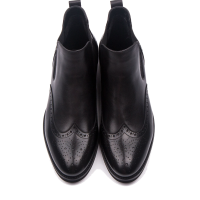
26/12/2023
1523
Classification of men's classic shoes
It is impossible to imagine an elegant and confident man without a pair of good shoes. Stylish, and most importantly, correctly selected shoes will highlight your individuality and create a successful..
→

26/12/2023
2554
Classification of women's shoes
Fashionable misconceptions have been dispelled. Now you will know exactly how boots differ from shoes, and moccasins from slip-ons. Especially for you, we have prepared a shoe guide that will allow yo..
→
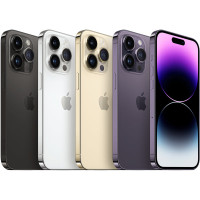
04/10/2023
1707
About iPhone 14
About iPhone 14 - the best choice for everyone
Introduction
Apple continues to delight its fans with innovative devices, and the iPhone 14 is no exception. This new generation smartphone will br..
→
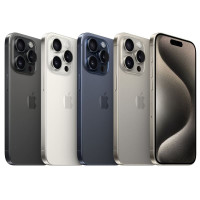
28/09/2023
1838
About iPhone 15
About iPhone 15: the latest technology in your hands
Features of iPhone 15
iPhone 15 is the latest innovation from Apple, representing the newest technology in smartphones. It has incredible..
→
